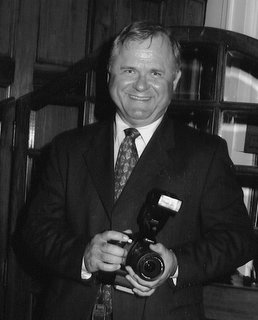The Genesis of Computer Art – FORTRAN a Computer Art Medium Replicates the Leonardo da Vinci Mona Lisa – A tribute to John Backus



Where did computer art, computer graphics and computer animation begin?
Written communication became sharable and pervasive once stone etchings were replaced with the mobility of paper and ink. Similarly once computer languages advanced from machine or assembly code to third generation computer languages, only then did computer output advance from simple alphanumerical (maybe mosaic) printouts to graphics and images with smooth curves and realism.
Computer graphical output got its humble start when alphanumeric characters hammered on TTY and line printers to represent X-Y graphs and even mosaic images. It was crude, but allowed for a more effective analysis of mathematical and scientific solutions. Computer programming languages like FORTRAN and BASIC made it easier to develop and program printers, plotters and CRT screens to display and print graphics and ultimately images.
The FORTRAN programming language – a personal and historic short review.
John Backus, the inventor of FORTRAN, passed away on March 17, 2007 at the age of 83. He lead a team of IBM computer scientists to invent the first high-level programming language in 1954. John Backus received the Turing Award in 1977, an IBM Fellowship (1987) and the Draper Prize (1993).
FORTRAN is a computer programming language particularly suited to computation and scientific applications. But it was also used for business applications like the student information system at Saint Mary's University (SMU) in Halifax Nova Scotia. It was a prevalent programming language in business before more structured and english-language-like programming languages came on the scene; namely, COBOL, PL1, RPG, BASIC.
It is FORTRAN that brings back fond memories of coding sheets, punch cards, debugging student code and the old IBM 1130 computer at university. FORTRAN, BASIC and COBOL were the prevalent programming languages of the day (circa 1976). After many iterations of “debugging your code”, having your program work was such a 'high', an exalted feeling of success.
Every Science, Engineering and even Business student undertook a course in one of these languages. A necessary and effective way of understanding the logical and mathematical world of computers. Even more so it offered students an in depth knowledge of business and science processes like order processing, accounting, engineering calculations.
With the recent passing of Mr Backus, I was reminded that there are historical vestiges of that programming era right in my own basement. I have a collection of my most 'profound programming works'. Hardcopy computer code printouts are contained in two binders. Even Better though! These programs are immortalized on 80 column punch cards! Why did I save computer punch cards for over 35 years? Not sure I am able to answer that question – Maybe I need some professional help!
FORTRAN programming as an Art Medium?
I enjoyed programming in FORTRAN. So much so, that I spent most of the Christmas of 1975 duplicating an alphanumeric printout picture of the famous Mona Lisa. This image of the Mona Lisa was done by printing and over-printing standard alphanumeric characters creating a mosaic art piece to form an image of that famous Leonardo da Vinci painting. Step back from this computer printout and you viewed a simple replica of Leonardo da Vinci's Mona Lisa. Not having access to the original programming code, I meticulously counted and coded each character line-by-line from a hardcopy printout into programming print statements. With due respect to the master Leonardo, I used FORTRAN print statements for this task! Like a brush to canvas the computer printout image of Mona Lisa took form after many days of coding.
One of these Mona Lisa Mosaic printouts is framed and hangs in my office where I hone my craft as an Internet Marketer and Photographer. Still have another dozen Mona printouts stored with my programming anthology binder.
The search has begun for access to an 80 column punch card reader.
Getting access to an 80-column card reader could facilitate moving the Mona Lisa FORTRAN code from its analog state to a digital version. Using an online editor, I could once again deploy the power of FORTRAN to print copies of 'computer mosaic' Mona Lisa. Then 'Mosaic Mona' would be available for the world to enjoy.
I figured out that my infatuation with FORTRAN programming might have stemmed from the fact that both FORTRAN and I were coincidentally created in 1954. Thank you John Backus for bringing us computer geeks FORTRAN.
About Bizfare Enterprise Inc
Bizfare Enterprise Inc provides a secure online shopping experience for high quality products and professional services. Products sold through inter-linked websites include: Fashion - clothing, jewelry, leather accessories; Home and Garden Decor - pewter, room accents, recreation; Collectibles & Memorabilia - mohair bears, photographs, sports items; Hobbies & Crafts - cooking, DIY wood projects, gardening, Music - equipment and services. Bizfare Enterprise Professional Services provide our clients with applied real world experience in Business and Channel Sales and Development, Internet Marketing, Commercial Photography, Personal Development and Professional Writing Services.
Labels: backus, basic, cobol, computer art, computer graphics, computer programming, fortran, fortran inventor, ibm fortran, john backus, leonardo da vinci, mona lisa, mosaic art
The Genesis of Computer Art – FORTRAN a Computer Art Medium Replicates the Leonardo da Vinci Mona Lisa – A tribute to John Backus


0 Comments:
Post a Comment
<< Home